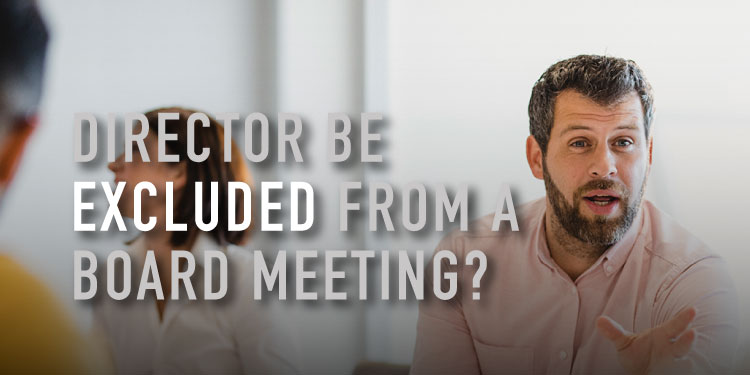Whether you’re new to the boardroom or a seasoned professional, it can never hurt to brush up on the basics! Business is tough at the best of times. Don’t let the big decisions distract you from the essentials. Once you understand the simple things, the rest will come naturally.
There are five questions you should always ask when learning more about a topic: Who? What? When? Where? How? This is no different in the boardroom. In fact, it is more important than ever that everyone in your organisation is on the same page. You should be able to easily answer the following:
- Who will be present?
- What procedures will you follow?
- When will you meet?
- Where will you meet?
- How do you ensure your meetings are effective?
We’ve done the research for you and put together this summary.
Who should be present at a board meeting?
Firstly, you should pay attention to who will be present at your meetings. There’s no boardroom without board members! Your team is at the heart of your organisation and you want to make sure they have every chance to do their best work.
Simplify the meeting process by making sure the right people are present and are fully aware of their roles. The main thing to remember is that every member of the board should be a key member of the organisation. No one should be present just to fill a seat.
The Corporate Secretary
The Corporate Secretary is the legal representative for the organisation. They must organise proceedings and make sure accurate records are kept. A good Corporate Secretary will put together a streamlined agenda and make sure information flows efficiently through the organisation.
General Counsel
The role of the General Counsel must be filled by a lawyer. They ensure the board is aware of regulations and remains legally compliant. In smaller organisations, this position is sometimes the same person as the Corporate Secretary.
The CFO or Treasurer
The CFO or Treasurer is responsible for the financial side of the organisation. They must reconcile bank accounts and produce accurate financial statements.
The CEO
The CEO is the top employee of the company and reports to the board. They must make day-to-day decisions on what goes on in the company. Their role on the board can vary between companies: they may also be a Chairperson, or they might not even be present.
The Chairperson
The Chairperson is arguably the most important person at the board meetings. They oversee everything and make sure the meetings go according to plan. They are responsible for checking the organisation’s actions and making plans in the long term. Although they must get the board’s approval, they can influence the agenda and voting process.
If you’d like to learn more about any of these roles, please read our in-depth article on Board Member Roles and Responsibilities. Now, let’s move onto the what of the Boardroom.
What happens in a board meeting?
Now you’ve got your team together, you can start putting things into action. You should all feel confident with Boardroom Procedures so you can deal with any issues that arise. Make sure everyone on the team knows how your company goes about things before starting any discussions.
In most organisations, issues will come to the board through the Senior Leadership Team. These may be passed on directly or raised at a public forum meeting. Once they are on the agenda, the board should deal with them according to Robert’s Rules. This is a 10 step process to make sure issues are addressed in a smart order. They are as follows:
- Introduction of the business
- Informal discussion
- Speaker “obtains the floor”
- Motions and resolutions
- Motions are seconded
- Question is stated
- Debate
- Secondary motions
- Voting
- Written record
These general principles can help structure your meetings. The most important thing is that an issue is discussed in the greatest depth possible. You should always prioritise the quality of discussion over the quantity of agenda items.
Once you’ve talked over the issues, you should have strong processes in place for where to go next. Action Items should be clear and precise. When drafting the meeting minutes, make sure to highlight any resolutions. Instructions should then be passed on to the SLT or specialist committee responsible. You should also have a process for checking whether these items are resolved by the next meeting.
When should your board meeting take place?
The schedule of your organisation depends on the size and sector. For example, some not-for-profits may wish to meet monthly. BBB’s Standards for Charity Accountability state that charities should meet three times a year, but boards in other industries may meet biannually or even less frequently.
In the UK, there is no legal requirement for private companies to have board meetings at all. However, it is best practice and considered good for business. As a baseline, your board should meet regularly enough to deal with its financial and legal duties. You need to find a balance between fulfilling these duties and making sure your team has time to prepare.
Sometimes board meetings are finalised as much as a year in advance! This leaves plenty of time to send out board packs but can make it difficult to adapt to change. The past year has shown how important it is that companies have a system in place to deal with the unpredictable. Future-proofing your plans is not just useful, it may save your organisation.
We’ve talked in the past about the importance of executive committees. Sometimes it can be useful for a smaller group of directors to meet more regularly. This allows them to react quickly to crises and challenges. Whether or not you have an executive committee, it is worth leaving flexibility in your plans.
Where should your board meeting take place?
There are a few things you need to consider when choosing where to hold meetings. The first should be security. Smaller organisations may hold their board meetings in a public place, but those dealing with highly confidential items cannot afford to do this. Make sure the security of your location is appropriate for the topics you will discuss.
You also need to consider accessibility. Try to make the boardroom somewhere that everyone on the team can get to easily. Take into account travel-time, as well as any provisions for disabled members. Finding the most accessible space possible is a benefit to everyone on your team.
Back in the 20th century, board meetings were generally held in an office. However, it is growing more common to have online or hybrid meetings. This is a more secure and accessible solution than meeting in-person. Given the disruption caused by the pandemic, companies are looking to the stability offered by a virtual boardroom. You no longer have to fly your team members in from around the country or world, which saves time and resources.
How to organise an effective board meeting?
The cornerstone of any board meeting is communication. Make sure everyone on your team can answer the questions we’ve set out in this article. They should know their role and the role of everyone else on the team. If there are any changes, you should be able to share them as quickly and effectively as possible. Software can help with this! You can make smart, secure decisions much faster with the help of board management software.
A board portal like Convene can simplify your boardroom. From pre-meeting organisation to post-meeting reviews, the intuitive app can streamline every part of the process. With a range of features including shared annotations, instant voting and action items, you can make sure everything goes right the first time.
Convene is now available fully integrated with Microsoft Teams so your whole organisation can benefit from our wide range of features and streamline your boardroom process from intern to CEO.
Get the boardroom basics right so your team can focus on the important challenges. Book a Demo with us today!








